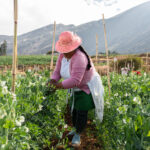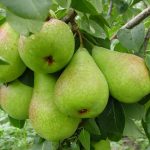Agronometrics in Charts: Promising season ahead for New Jersey blueberry growers

In this installment of the ‘Agronometrics In Charts’ series, Agronometrics examines the New Jersey blueberry season. Each week, the series focuses on a different horticultural commodity, highlighting a specific origin or topic and visualizing the market factors that drive change.
New Jersey had an excellent winter and spring, creating perfect conditions for blueberry growers to harvest a full crop of bigger, better, more flavorful berries.
"Things are looking really good right now," said Denny Doyle, chairman of the New Jersey Blueberry Industry Advisory Council. In 2023, New Jersey had a robust crop of blueberries. However, mid-season storms caused significant disruptions.
"It was very regional and certain areas got a lot more rain than other areas," Doyle explained. "The overall result was it got pretty tough out here for fresh, and New Jersey is really a large fresh packing state."
New Jersey's average blueberry crop size is around 40 million pounds, with 32 million pounds sold fresh and 8 million pounds frozen. This year, the outlook is promising. "The relationship between leaves, new growth, and fruit is just wonderful this year," Doyle noted. "Some years, we get more vegetative growth, which shortens up the crop, or it's so heavy that the blueberry plant has some difficulty."
Most of New Jersey's blueberries are sold to big box stores and traditional retailers on the East Coast, as well as farm stands and farmers markets.
“We go all across the U.S., with our target markets including Chicago, Minneapolis and all around the Detroit area until Michigan starts,” Doyle said. “We reach Canada, and so it’s big business there until the Vancouver crop comes in. There’s a rule with the Canadian government that once those Vancouver berries start, they chase us out. They protect their own blueberry growers.”
Labor remains an ongoing challenge for New Jersey growers, compounded by legislative issues. A proposed Heat Stress Bill in Trenton could mandate pulling pickers from fields in temperatures above 80 degrees. "That is an issue of high concern because it could be really disruptive," Doyle said.

Source: USDA Market News via Agronometrics.
(Agronometrics users can view this chart with live updates here)
In our ‘In Charts’ series, we work to tell some of the stories that are moving the industry. Feel free to take a look at the other articles by clicking here.
All pricing for domestic US produce represents the spot market at Shipping Point (i.e. packing house/climate controlled warehouse, etc.). For imported fruit, the pricing data represents the spot market at Port of Entry.
You can keep track of the markets daily through Agronometrics, a data visualization tool built to help the industry make sense of the huge amounts of data that professionals need to access to make informed decisions. If you found the information and the charts from this article useful, feel free to visit us at www.agronometrics.com where you can easily access these same graphs, or explore the other 21 commodities we currently track.














































